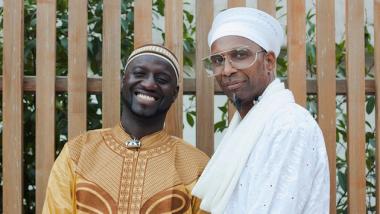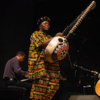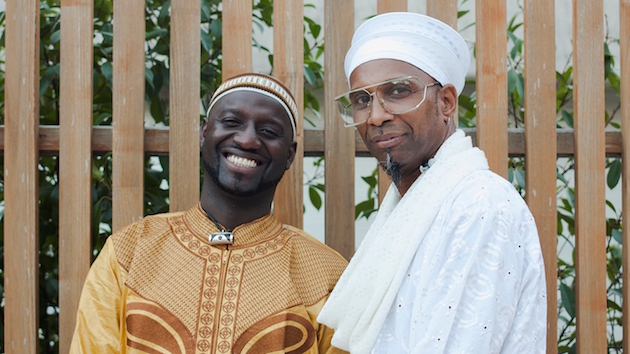
Golden ages are usually defined in hindsight, but everyone seemed to sense that the late 1990s were a special time for jazz in the Bay Area. The rapidly inflating tech bubble sloshed money everywhere and some of that cash flowed int o underwriting gigs. It’s not that musicians were making more money on any given night (though you’d hear stories about serious coin for corporate events), but every other restaurant seemed to start presenting duos, trios, and even larger combos. Some nightspots, like Bruno’s, offered multiple bands over the course of an evening, presenting local and touring masters.
Veteran Bay Area beboppers were still active and often dedicated to mentoring aspiring young players. The experimental scene thrived in a handful of storefront spaces. Young audiences flocked to the burgeoning acid jazz scene, which looked backward to the boogaloo and soul jazz sound of the late 1960s while incorporating new jack hip-hop beats. No musician embodied the sense of infinite possibility more than Omar Sosa.
The Cuban pianist landed in the Bay Area in 1995 by way of the Afro-Ecuadoran province of Esmereldas, and quickly earned attention with his commanding technique and percussive attack. By the late 1990s, he was recording prolifically for his own label, Otá Records, and his music seemed to expand exponentially, combining the sounds he was encountering in the Bay Area with the influences he brought with him. Every performance seemed to add another player into the mix, as he somehow integrated Yoruba chants, hip hop rhymes, post-bop harmonies, and Moroccan cadences within a spectacular matrix of Afro-Cuban rhythms.
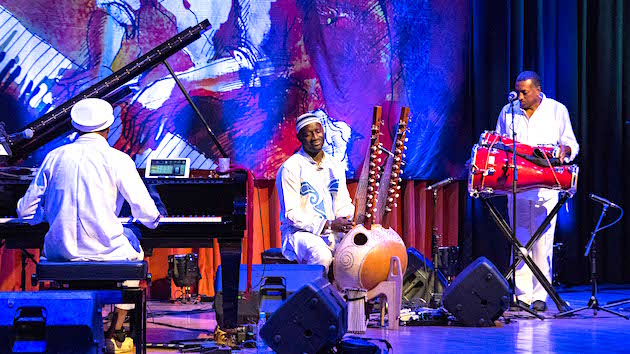
The good times screetched to a halt when the dot-com bubble fully deflated in 2001. Sosa had already departed, eventually landing in Barcelona, where he’s lived ever since. His musical universe has continued to expand, each recording capturing his interactions with an evolving international cast of improvisers. But the most striking thing about the music he’s playing now is that instead of adding layers of sound he’s distilling his concept down to essences.
He presents the North American premiere of Transparent Water at Yoshi’s on Friday and Saturday, March 9 and 10, and at Santa Cruz’s Kuumbwa Jazz Center on Monday, March 12. While the strikingly beautiful album features a typically Sosaian ensemble drawn from Japan, China, India, Senegal, and Venezuela, the trio he’s touring with strips away all the extraneous elements. Co-billed with Senegalese kora master Seckou Keita, the triumverate is built around Gustavo Ovalles, a dazzling percussionist from Venezuela who’s collaborated widely with Sosa for the past decade. Keita, however, is a recent partner, and Sosa is clearly smitten.
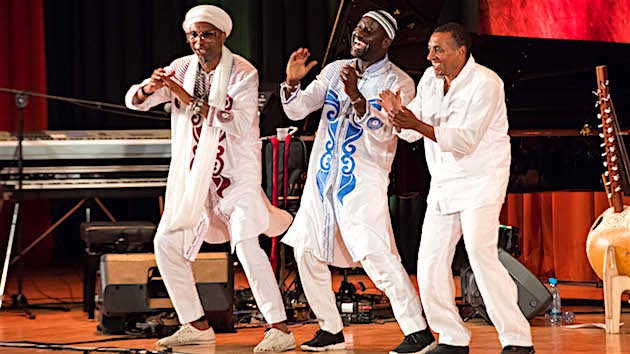
Hailing from an ancient line of griots, Keita has lived in London for more than two decades, and first gained widespread attention with the world rock band Baka Beyond. He plays a double-neck, 22-string kora and has become an expert in bringing traditional praise songs into untraditional contexts. Sosa met him in London in a band led by American-born, UK-based drummer Marque Gilmore, “and as soon as the guy plugged in his kora he blew my mind,” said Sosa, 52, speaking by Skype from his home near Las Ramblas. “I’ve played with all the Sissokos,” the Malian lineage of griots, or jelis, responsible for West African oral tradition and history. “But I never played with the Keita side from Senegal. After the first song, I said we need to do something together.”
He wasn’t just being polite. A week later he had reached out to Keita and set in motion a week-long recording session at a remote German studio in Osnabrück, Lower Saxony. “It’s a house and we lived there for the week,” Sosa said. “We’d cook food. We walked in the country, and we’d record until two in the morning. He set up the kora close to the piano and we’d talk in a musical way. I’d show him this is my traditional thing. And he shows me, this is my tradition too. I recorded a lot of the pieces. Sometimes there’d be a structure with a little introduction. Other pieces are more improvised.”
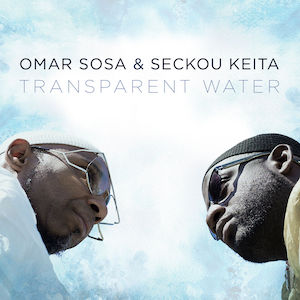 Sosa has never shied away from making conspicuously beautiful music, but Transparent Water finds him wading into a realm that’s quietly ravishing. Spacious and uncluttered, the music ebbs and flows on the currents of Keita’s rippling kora and Sosa’s shimmering piano. The evocation of aqueous states can feel programmatic. Their interactions are as mesmerizing as sunlight caught in the eddy of a stream.
Sosa has never shied away from making conspicuously beautiful music, but Transparent Water finds him wading into a realm that’s quietly ravishing. Spacious and uncluttered, the music ebbs and flows on the currents of Keita’s rippling kora and Sosa’s shimmering piano. The evocation of aqueous states can feel programmatic. Their interactions are as mesmerizing as sunlight caught in the eddy of a stream.
While Ovalles doesn’t get billing in the trio, he’s the essential solvent, providing an array of percussion textures that maintain momentum without adding density to the mix. Intimately familiar with Sosa’s approach, he knows how to shape a piece without verbal direction. “We don’t have to talk, we just play,” Sosa says. “I like when improvisation sounds like written music, and the level of communication we have is so open. I love sweet counterpoint. When you have crazy counterpoint, you need more force to arrive at a peaceful end. It’s peaceful music, lovely music, but not boring music.”

